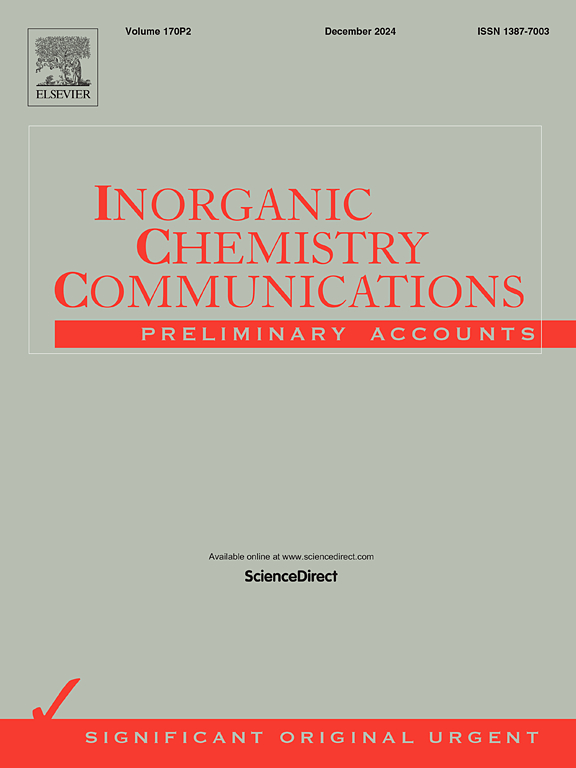Chenopodium exsuccum plant extract for green zinc oxide nanoparticles synthesis: Photocatalytic titan yellow degradation and antioxidant and antibacterial properties
IF 4.4
3区 化学
Q1 CHEMISTRY, INORGANIC & NUCLEAR
引用次数: 0
Abstract
Cow dung was used as fuel in the synthesis of zinc oxide nanoparticles via a one-pot combustion method, emphasizing simplicity and environmental friendliness. The synthesized nanoparticles underwent thorough characterization using XRD, FTIR, XPS, UV, EDX and TEM techniques. To evaluate their photocatalytic effectiveness, Titan yellow (TY) dye was chosen as a model pollutant. The study systematically investigated the photocatalytic efficiency and degradation kinetics of the ZnO nanoparticles. Under sunlight, the nanoparticles exhibited significant removal efficiencies, achieving 69 % degradation of TY. A plausible photocatalytic mechanism for these outcomes was also proposed. Overall, the environmentally friendly synthesis of the target photocatalyst demonstrates promising potential for applications in wastewater treatment and other ecological contexts. ZnO NPs derived from Chenopodium exsuccum shown remarkable antibacterial efficacy against a range of pathogens, including Gram-positive (Staphylococcus aureus, Micrococcus luteus) and Gram-negative (Klebsiella pneumoniae, Escherichia coli). Furthermore, the nanoparticles demonstrated noteworthy antioxidant efficacy through the removal of 1,1-Diphenyl-2-picrylhydrazyl (DPPH) free radicals. This demonstrates their potential utility in preventing damage caused by oxidative stress and various diseases related to stress.

求助全文
约1分钟内获得全文
求助全文
来源期刊

Inorganic Chemistry Communications
化学-无机化学与核化学
CiteScore
5.50
自引率
7.90%
发文量
1013
审稿时长
53 days
期刊介绍:
Launched in January 1998, Inorganic Chemistry Communications is an international journal dedicated to the rapid publication of short communications in the major areas of inorganic, organometallic and supramolecular chemistry. Topics include synthetic and reaction chemistry, kinetics and mechanisms of reactions, bioinorganic chemistry, photochemistry and the use of metal and organometallic compounds in stoichiometric and catalytic synthesis or organic compounds.
 求助内容:
求助内容: 应助结果提醒方式:
应助结果提醒方式:


